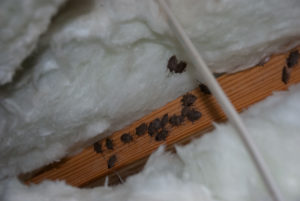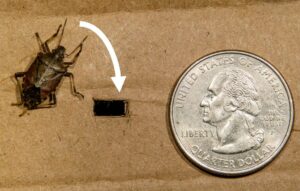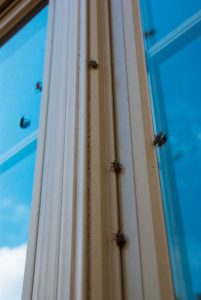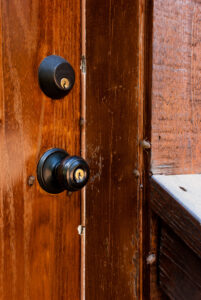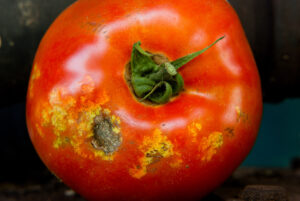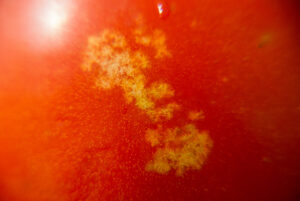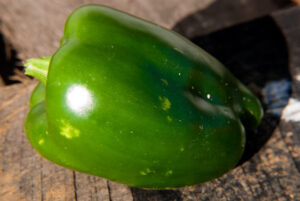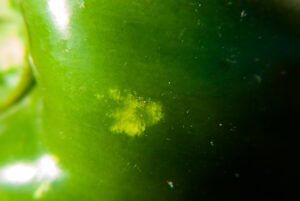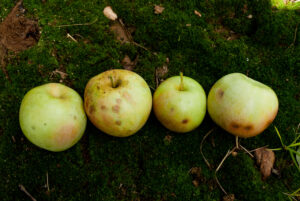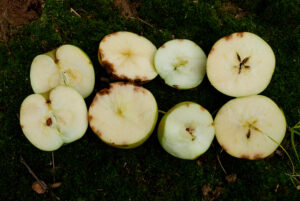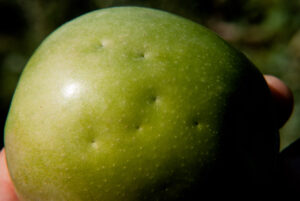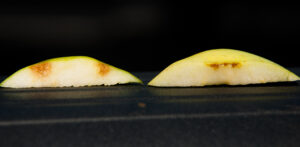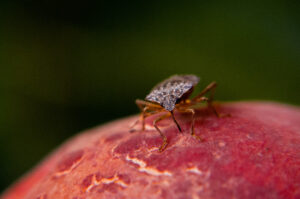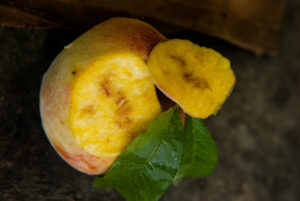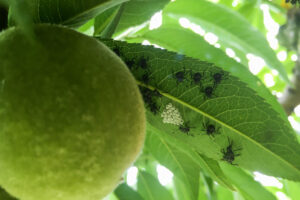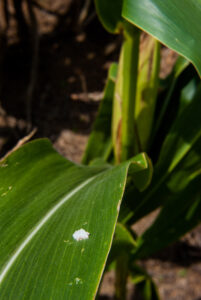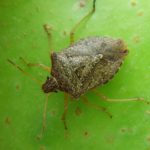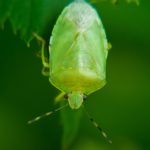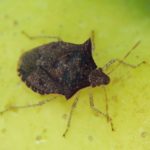FAQs: Brown Marmorated Stink Bug
go.ncsu.edu/readext?264787
en Español / em Português
El inglés es el idioma de control de esta página. En la medida en que haya algún conflicto entre la traducción al inglés y la traducción, el inglés prevalece.
Al hacer clic en el enlace de traducción se activa un servicio de traducción gratuito para convertir la página al español. Al igual que con cualquier traducción por Internet, la conversión no es sensible al contexto y puede que no traduzca el texto en su significado original. NC State Extension no garantiza la exactitud del texto traducido. Por favor, tenga en cuenta que algunas aplicaciones y/o servicios pueden no funcionar como se espera cuando se traducen.
Português
Inglês é o idioma de controle desta página. Na medida que haja algum conflito entre o texto original em Inglês e a tradução, o Inglês prevalece.
Ao clicar no link de tradução, um serviço gratuito de tradução será ativado para converter a página para o Português. Como em qualquer tradução pela internet, a conversão não é sensivel ao contexto e pode não ocorrer a tradução para o significado orginal. O serviço de Extensão da Carolina do Norte (NC State Extension) não garante a exatidão do texto traduzido. Por favor, observe que algumas funções ou serviços podem não funcionar como esperado após a tradução.
English
English is the controlling language of this page. To the extent there is any conflict between the English text and the translation, English controls.
Clicking on the translation link activates a free translation service to convert the page to Spanish. As with any Internet translation, the conversion is not context-sensitive and may not translate the text to its original meaning. NC State Extension does not guarantee the accuracy of the translated text. Please note that some applications and/or services may not function as expected when translated.
Collapse ▲How do I kill BMSB in my house?
Insecticide sprays are not always effective due to the mobile nature of the stink bugs, the constant influx of new stink bugs from outside, and the difficulty of treating populations without contaminating living areas. In addition, leaving large numbers of dead BMSB inside attics, walls, or crawl spaces can attract more unwanted pests, such as carpet beetles. A better method is to capture individuals with an empty jar or bottle, then place it in the freezer to kill the bugs. They can also be drowned in a dish of soapy water. Some homeowners with large infestations keep a hand-held vacuum dedicated to BMSB removal, as long as the vacuum container is then frozen to kill bugs. Admittedly, these methods can be time-consuming, but they are often the least worst options.
Try not to squash or agitate BMSB in the house, which only worsens the smell, and do not live-release them outdoors, as they are likely to come back inside.
How do I keep BMSB out of my house to begin with?
It is important to understand the BMSB life cycle. By summer, most stink bugs will have moved outdoors to feed and mate in woods, landscaping, and agricultural systems. This is the time to inspect your house for cracks around windows and doors, unscreened attic louvres, and gaps around faucets and piping. Adult stink bugs can pass through holes as small as 3x7mm. Seal all potential entry points with weatherstripping, caulk, or foam sealant. An excellent University of Maryland video demonstrates “Exclusion and Execution” techniques for BMSB invaders.
Do not “bug-proof” your house in fall, winter, or early spring, which will likely trap BMSB inside. Let them escape on their own in spring and then seal them out before they try to return in late August.
What can I do about stink bugs in my garden?
In the garden, BMSB usually attack tomatoes, peppers, okra, green beans, soybeans, corn, Swiss chard, peaches, apples, pears, plums and caneberries (i.e., most common crops). Stink bugs have “piercing-sucking” mouthparts which enable them to puncture plant tissues and then siphon out fluids. The resulting damage does not resemble chewing so much as discoloration, rot, and desiccation. Plant vigor is rarely affected, but edible fruit and leaves may be ruined.
Control is difficult due to the limited effectiveness of insecticides and the constant influx of BMSB from outside areas. Pyrethroid insecticides are the most effective chemical option, so choose products that contain the active ingredient bifenthrin, cyfluthrin, or lambda-cyhalothrin. Be aware that these products will also kill many beneficial insects and should be used only when infestations are severe. Options for organic growers are even more limited and require frequent sprays (possibly every couple of days under intense pressure) that target immature BMSB. Organic products that have shown activity include Azera (a mixture of azadirachtin and pyrethrins) and Entrust (spinosad).
Some researchers and organic growers have also tried “trap-cropping,” the practice of growing BMSB-preferred host plants (such as sunflowers) in a barrier around the actual crop in hopes of diverting stink bugs away from important fruits and vegetables. Results have been mixed and more work is needed to make this method effective. Read more about BMSB in organic systems.
Will stink bugs hurt me, my children, my pets, or my property?
Stink bugs can devastate crops, but are otherwise primarily nuisance pests that do not bite, sting, transmit disease, or chew structural materials. In areas with very high populations, they can get into small engines, heat pumps, and other equipment in numbers large enough to cause malfunctions. Dogs, cats, and chickens have been seen eating stink bugs with no ill effects.
Why do BMSB stink?
All stink bugs are capable of emitting a foul-smelling chemical that they use as a defense mechanism when alarmed. The taste of the chemical also deters some birds and other animals from eating them. An undisturbed BMSB is not likely to stink, but it will if agitated. The smell of many distressed stink bugs in an enclosed space can be intolerable.
We have always had a few stink bugs around – why are there suddenly so many?
North Carolina has several species of native stink bugs, some of which appear quite similar to the brown marmorated stink bug. Native stink bug populations are kept in check by native insect enemies. The BMSB, however, is a recent, accidentally-introduced exotic pest that is not significantly controlled by native predators and parasitoids. Learn the differences between the true brown marmorated stink bug and its look-alikes.
What is the future of BMSB in North Carolina?
Since its first appearance in the state in 2009, BMSB has followed a trend already seen in states near its original point of introduction: low numbers appeared in urban areas, then populations increased, spread to rural areas, and began damaging agricultural crops within a few years. BMSB is now an ongoing challenge to commercial growers and gardeners (as well as frustrated homeowners) throughout the mountains and piedmont of NC.
Populations are not increasing everywhere. We have not seen high numbers of BMSB in the coastal plain, and in the mountains and piedmont some local populations have moderated or declined. These trends have been observed in other states as well. Day length, the presence of wild and cultivated host plants, variations in weather, the ease with which BMSB can move through an area, and natural biological control by native and introduced parasitoids all affect the rise and fall of populations. At this time, the reasons for fluctuations in specific populations of BMSB are usually not clear.
Previous research by scientists around the US, including at NCSU, has helped commercial growers protect their crops from BMSB much more effectively than just a few years ago. Our focus now is to find controls that are cheaper, more efficient and sustainable, and less disruptive to traditional IPM programs. Keep checking the BMSB home page for the latest information.



